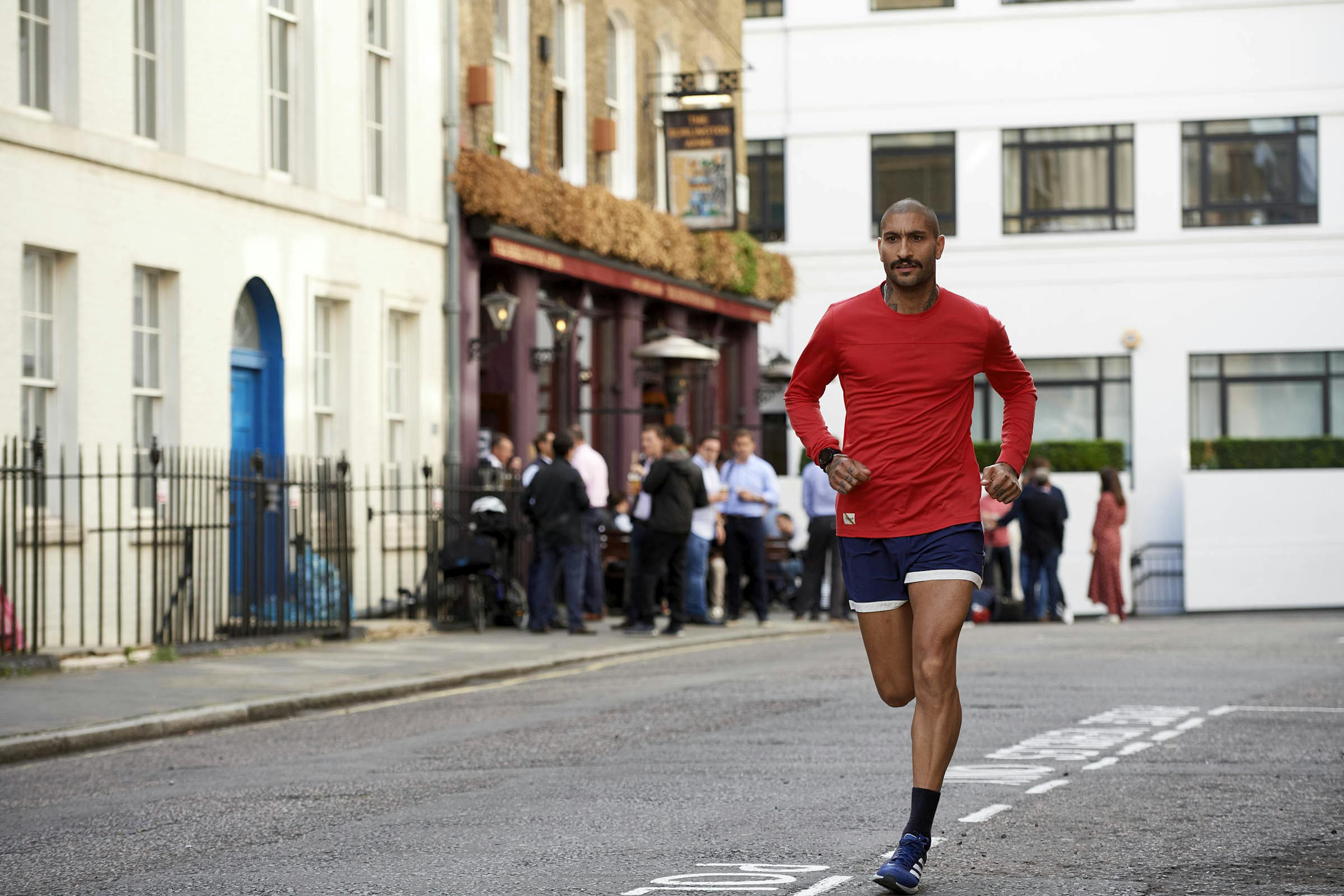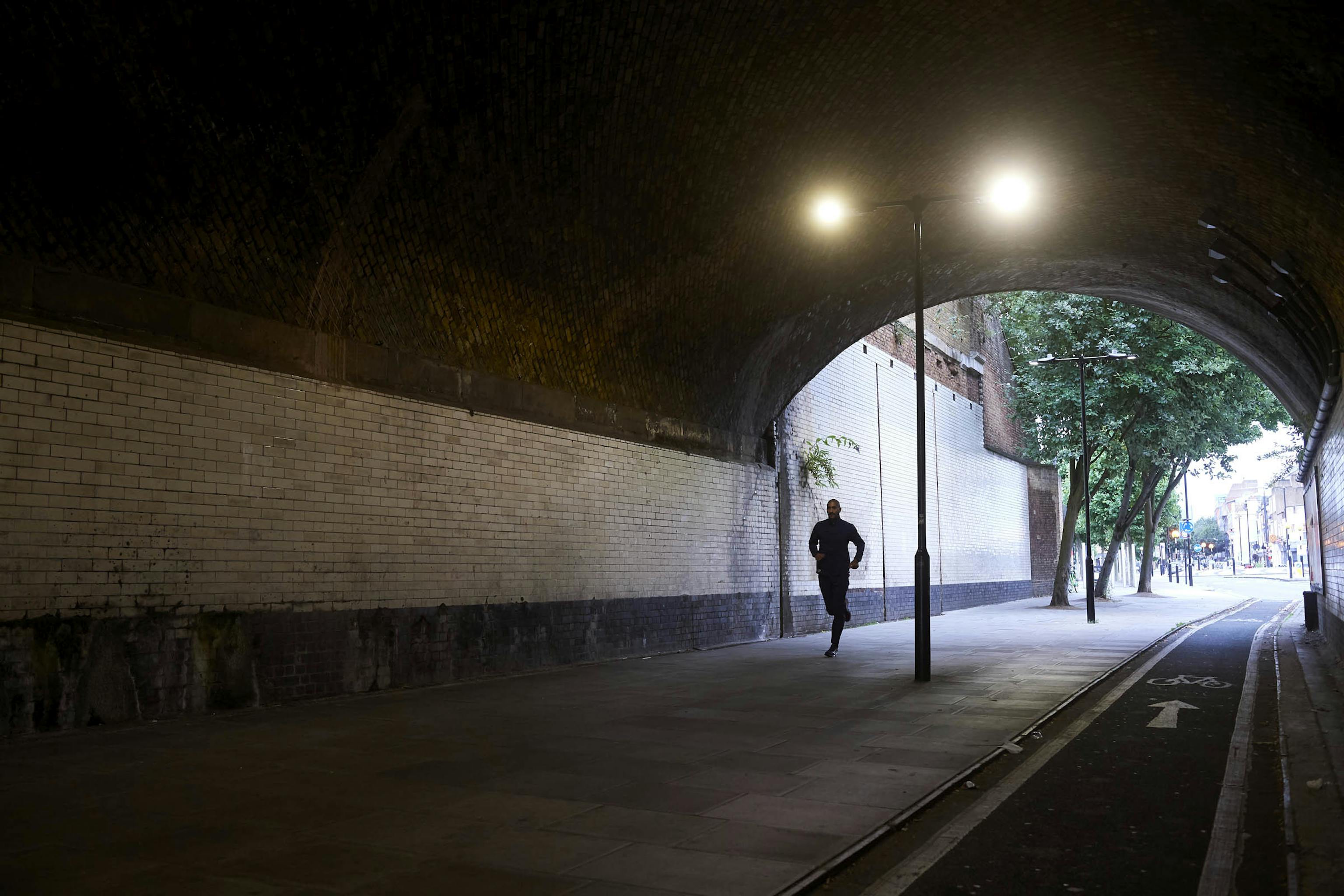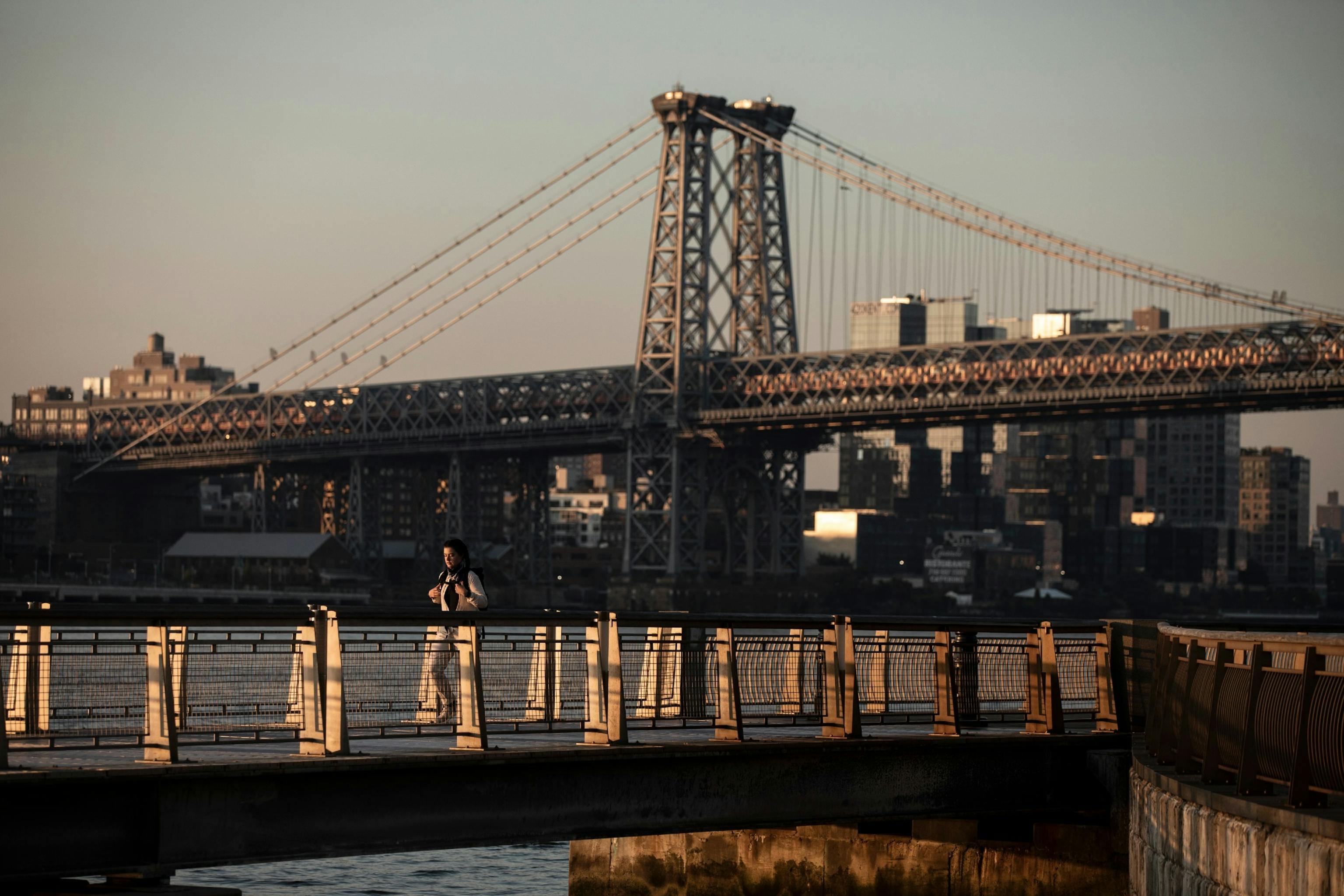

An Academic Approach to Run Commuting
Words by Simon Cook
Photography by George Marshall
As a runner and human geographer, run commuting is a truly fascinating area to study. I have been fortunate to conduct the first large-scale research into run commuting at a time when interest in active transport is exploding and the practice of utility running is evolving. My research studied run commuting in the UK: how it emerged, how it happens and what potential it has. I was persuaded to make it the focus of my PhD when I moved to London in 2013 and I quickly encountered considerably more run commuting than anywhere else I’d ever lived; when I was forced into an impromptu run commute I knew I’d found my calling. I spent the following few years interviewing, surveying and running alongside run commuters to better understand this practice. The results have been fascinating.
What’s in a name?
One element that makes run commuting such a distinctive transport choice, is that it really isn’t about transport at all. Very few people take up run commuting based on transport considerations alone. Few people opt for running for its convenience, comfort, speed, cost, safety or environmental benefits. Rather, run commuting is more of a lifestyle choice (though not a choice equally available to all – but that’s another conversation). Run commuting is predominately motivated by time and the way it can make lives more liveable. Run commuting enables running to occur in a way that harmonises the competing demands and rhythms of everyday life, be that work, relationships, children, running demands etc. As such, run commuters relate to run commuting differently to how railway commuters may relate to trains, for example. Run commuters are mostly frequent and/or serious runners for whom running is already a major element of their life and identity. Thus, run commuting sustains that identity, underlining running’s role in their life. For some, run commuting is held with equal reverence and being a run commuter now forms part of their identity, embodying the various ideals and meaning it holds. But an interesting tension exists here. There is both a passive and an active eschewal of the run commuting label/identity amongst those who run commute. Here, run commuting is either seen as indistinct from their other running - that it is just running - or the choice to run to work is made precisely so they don’t feel like they are commuting. As such, the moniker of run commuting is certainly contested: accepted and embodied by some, and disavowed and eschewed by others.

Sustaining run commuting
The time motivations for run commuting raise an intriguing question about the practice: is it sustainable? Run commuting is an issue-driven practice. People do it, mostly, because they struggle to fit running into their life otherwise. It is pragmatic running for the time-poor. So, what happens if those time demands ease? What happens when it is possible to fit running into life without run commuting? Is it something people continue to do? After all, running at rush hour rarely offers the best (however defined) running experience. This is still something of a question mark. My research didn’t explore this directly, but it did seem to suggest that for many, run commuting is a short term pursuit, a part of commuting repertoires for a couple of years before ceasing to be. For others, it sustains for longer but is more cyclical, with the need to run commute oscillating with the rhythms of race entries and training plans. This is not the case for all, however. Many sustain run commuting practices for years and decades and there’s some evidence to suggest run commuting tenures are increasing. Key within this is finding motivations beyond time-shortages to instigate run commuting; finding benefits and values of run commuting outside of mere time-harmony. Many run commuters find they enjoy running their commute substantially more than alternative commuting modes and this is enough to catalyse a longer-term run commuting practice. In doing so, run commuting ceases to be an issue-driven practice that may struggle to be sustained.
Spaces of run commuting
The development of run commuting routes that maximise the enjoyment, experience and benefits of run commuting is one key way of finding motivation. Routing choices in run commuting differ from other types of running. The A-to-B nature of run commuting provides two fixed points that need connecting on a run, compared to the one that normally starts and ends runs. While this is constraining in some ways, it also extends the geographical scope of running – you can travel further in a line than a loop – which brings opportunities. Combined with the need for some sense of punctuality and the congested environments that come with running to/from work, the routes run commuters choose to run are fascinating to explore. A variety of factors affecting route choices emerged from my research included the desire to maintain flow (minimise stops, disruptions and interruptions), ensure safety (avoiding physical, social and environmental risks), reduce exposure to pollution (especially in city-centre run commuting), and to heighten the aesthetic qualities of the run. This latter element may involve maximising the ‘natural’ and green spaces encountered on the run or it may involve seeking visually appealing places in the built environment. In these ways, run commuters often discuss a reorientation to place. When running their commute offers new insights, perspectives and attunement to places, which can be a source of pleasure and enjoyment, it boosts sustainability. These varied factors also result in green and blue spaces (parks, canals, riversides etc) being highly important spaces for run commuting, acting as corridors of active commuting capable of fulfilling multiple desires of run commuting spaces and maximising run commuting’s benefits.
Run commuting and COVID-19
But what of run commuting now? My research into run commuting was conducted long before the world knew about COVID-19 and measures in response to it changed the social and geographical fabric of everyday life. What role may run commuting have in a world where physical distancing is questioning the feasibility of mass public transit and commuting is becoming less frequent? I am torn on the prospects of run commuting in this world. The importance of run commuting is increasing precisely at the same time as the need for it reduces. As an active mode of commuting that can ease demands on public transport, run commuting should be encouraged more strongly than ever. Unfortunately, running tends to be absent from the promotion of active travel and conversations of road space reallocation, as it is from most active travel discourse. At the same time, is encouraging sweating and heavy-breathing bodies in city centres and workplaces during a pandemic good? Even if yes, the need people have to run commute is likely to have decreased as the temporal pressures of everyday life have eased (for some) meaning running can more easily be incorporated into daily life. Yet, commuting less frequently may make run commuting more achievable for others, and increase the potential for additional utility running - running to collect kids from school or buy groceries, etc. If so, the spaces of run commuting are likely to change somewhat as the need to maintain physical distancing is added to the mix of route desires. Canals and towpaths will certainly feature less readily. Speculating here is tricky. Run commuting certainly seems to have a role to play in pandemic and post-pandemic commuting but whether it will and how that may change the nature of run commuting remains to be seen.
Simon Cook is a human geographer at Birmingham City University.
He is on Twitter @SimonIanCook and he blogs at www.jographies.wordpress.com

Run Commute Collection
This season we’ve introduced our first-ever Run Commute Collection, featuring tailored staples for active transport made from Merino wool and developed with support from The Woolmark Company. Merino, Mother Nature’s performance fabric, is the ideal material for a run commute: breathable and wicking, with a sophisticated feel that won’t look out of place if you stop for coffee, it dries in a flash and won’t retain odors for the run home.
We tested the kits out on the roads in London and New York by commuters Leon Cerrone, Nicole Loher and Meggie Sullivan. Read more about the runners via the link below.